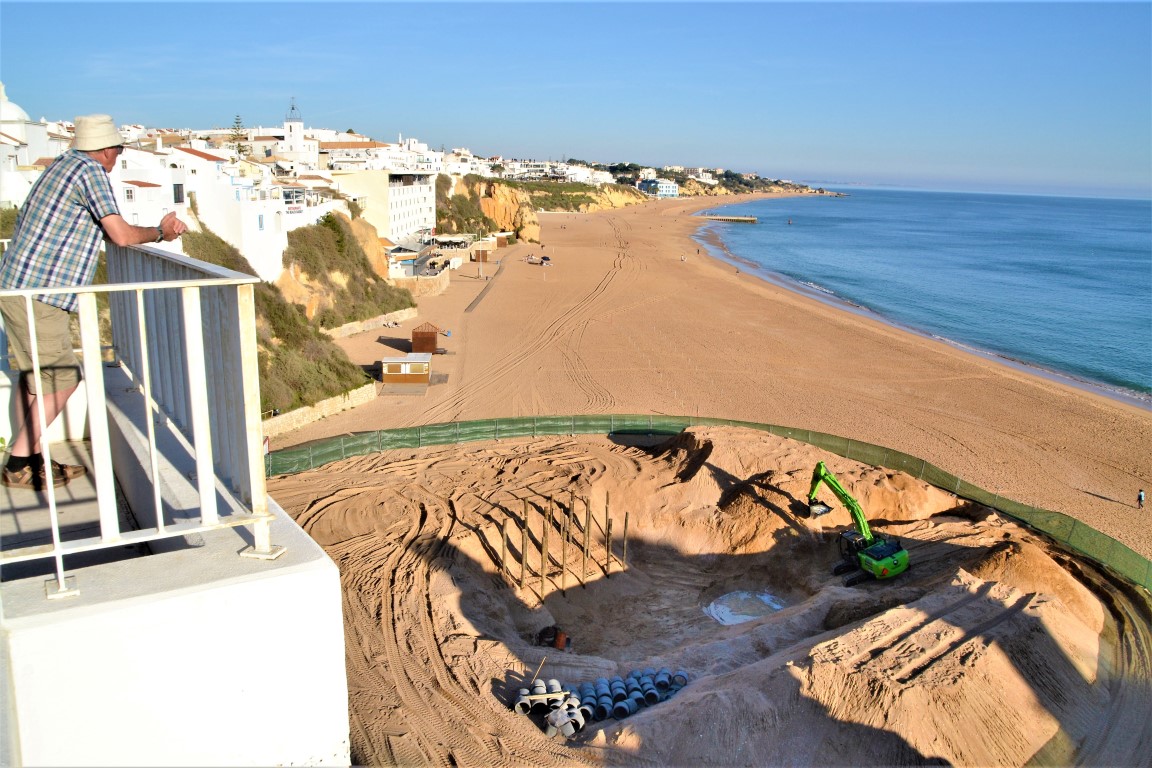 There is a “crater” on Praia do Peneco, in Albufeira, attracting all the attention. The hole was opened for the reconstruction works of a beach support and the works that are underway have raised negative reactions on social networks and doubts from Associação Almargem, as to its legality.
There is a “crater” on Praia do Peneco, in Albufeira, attracting all the attention. The hole was opened for the reconstruction works of a beach support and the works that are underway have raised negative reactions on social networks and doubts from Associação Almargem, as to its legality.
However, according to the Portuguese Environment Agency (APA), the construction work for the new beach support, which will replace another one, destroyed by a storm in 2002, is licensed and will be monitored.
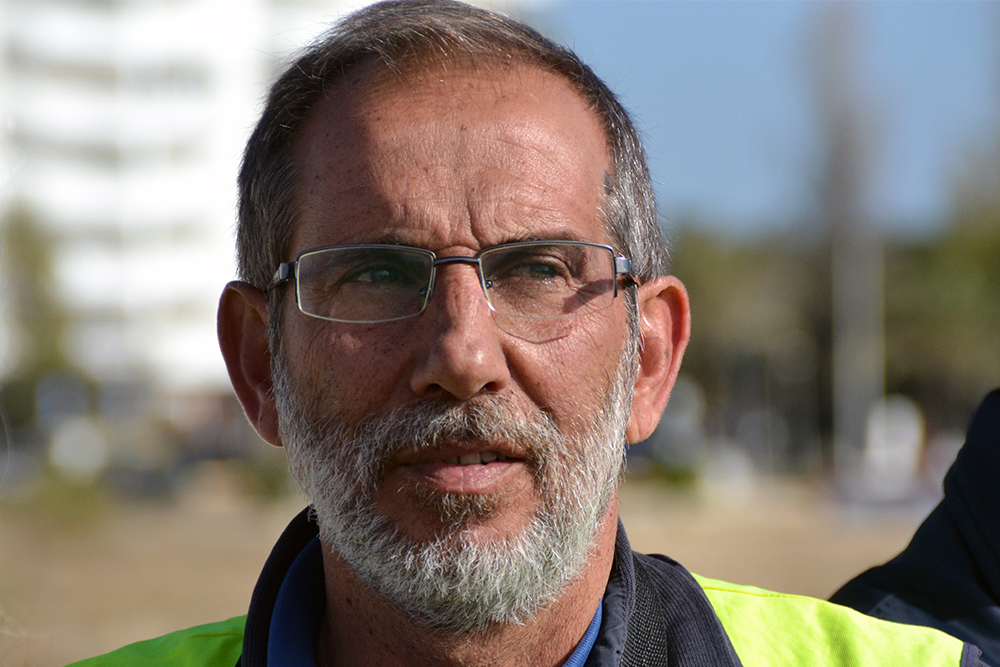
In a statement sent to the newsrooms, the Almargem Association “demands” the “stop and immediate reversal of the works in question”, since it considers that this beach support “is being built without being planned as a beach support at POOC Burgau-Vilamoura (still in force), although it is foreseen in the most recent POC Odeceixe-Vilamoura (for unknown reasons not yet formally approved by the government)».
For the environmental association, «there is a lot of talk about risks in the coastal zone, largely derived from climate change, but at the same time, the permanence of housing and equipment in areas likely to be affected by the advance of the Ocean. In fact, right near the place where this restaurant is now being built, a small beach support was destroyed by the sea years ago».
Contacted by Sul Informação, Sebastião Teixeira, APA regional delegate, explained that the work in progress is precisely to replace this small masonry beach support, called Esplanada Raposo, which was destroyed by a storm "in 2002 or 2003". In other words, the work ends up respecting the POOC, because it already existed.
The responsible for the APA in the Algarve explained that this is a requalification «like hundreds that we have been doing in the Algarve». This work, in particular, had to wait, since «after feeding the sand, done in 2011, we had to wait to confirm that the sand was holding up and 90% of the sand that was initially put in remains, which is good. ».
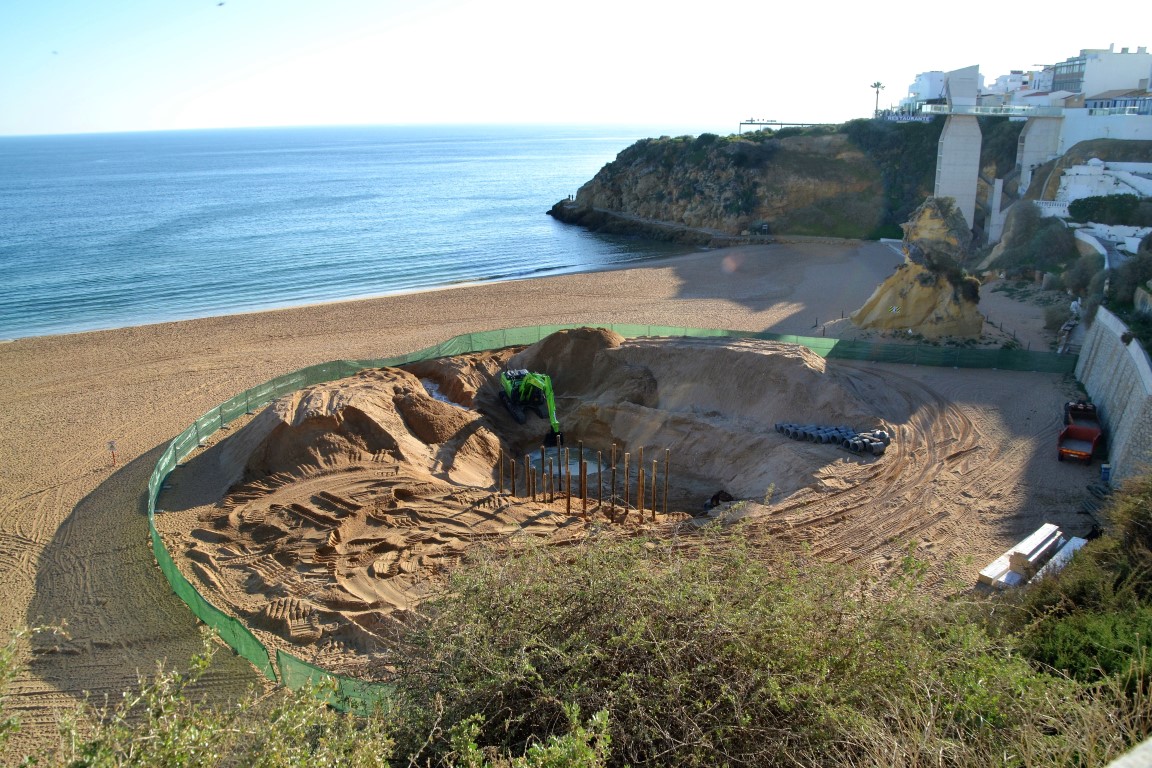 After assessing the stability of the sand, «locations were defined for the implementation of beach support», which should be «sufficiently far from the cliffs, outside the risky areas, that's why this is the place», he adds.
After assessing the stability of the sand, «locations were defined for the implementation of beach support», which should be «sufficiently far from the cliffs, outside the risky areas, that's why this is the place», he adds.
Regarding the “crater” opened in the sand, Sebastião Teixeira explained that “beach support must be founded. They cannot only be laid on piles in the sand, they must be founded on rock. Underneath the beach, like all beaches with cliffs, there is an abrasion platform, which has a rocky bottom. What happens in this case is that, as the beach was fed, there are four meters of sand on top of it and a large hole has to be made, because the sand can only hold slopes with a slight inclination».
The APA delegate clarifies that the stakes that are placed in this “great hole” constitute the foundation of the beach support. At the excavation site, water is still visible, such as the Sul Informação found out. According to Sebastião Teixeira, water appears because “the water table has been reached, which is the level of sea water”.
Concrete cylinders are also visible in the sand, which will be used as “shoes” for the piles, providing more resistance. «When the pile is finished, all the sand will be replaced and the concrete cylinders will have two meters of sand on top. This serves to safeguard the security of the support, in case a [Hurricane] Hercules, or a “cousin” of him, comes. It serves to make sure that the beach support is maintained, even if the beach has no sand, because sand is always transitory», explains the person in charge.
Sebastião Teixeira admits that the work, «seen from above, is impressive, because it is a large crater, but the explanation is simple. There is nothing strange that we do not know or that the Chamber does not know. It was perfectly planned”, he concludes.
See the images of the works:
Photos: Nuno Costa|Sul Informação
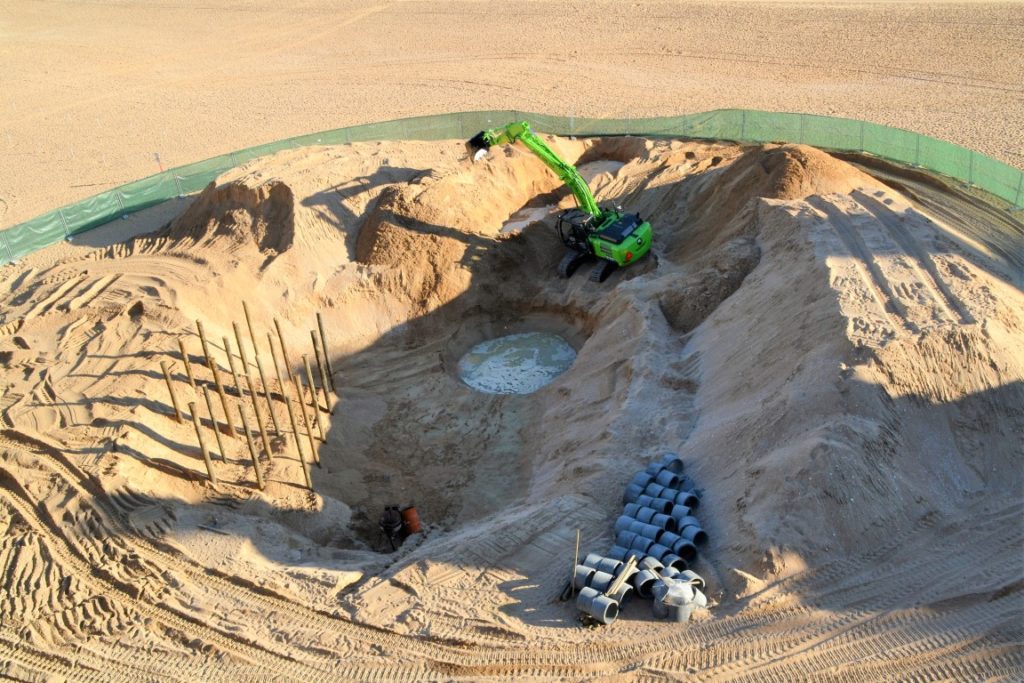
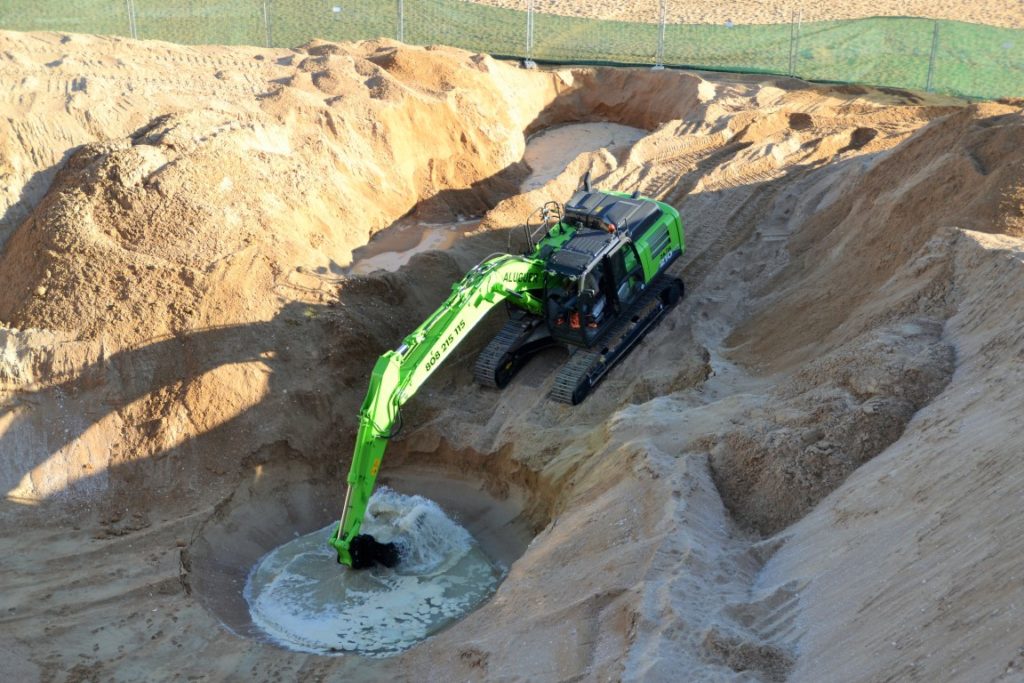

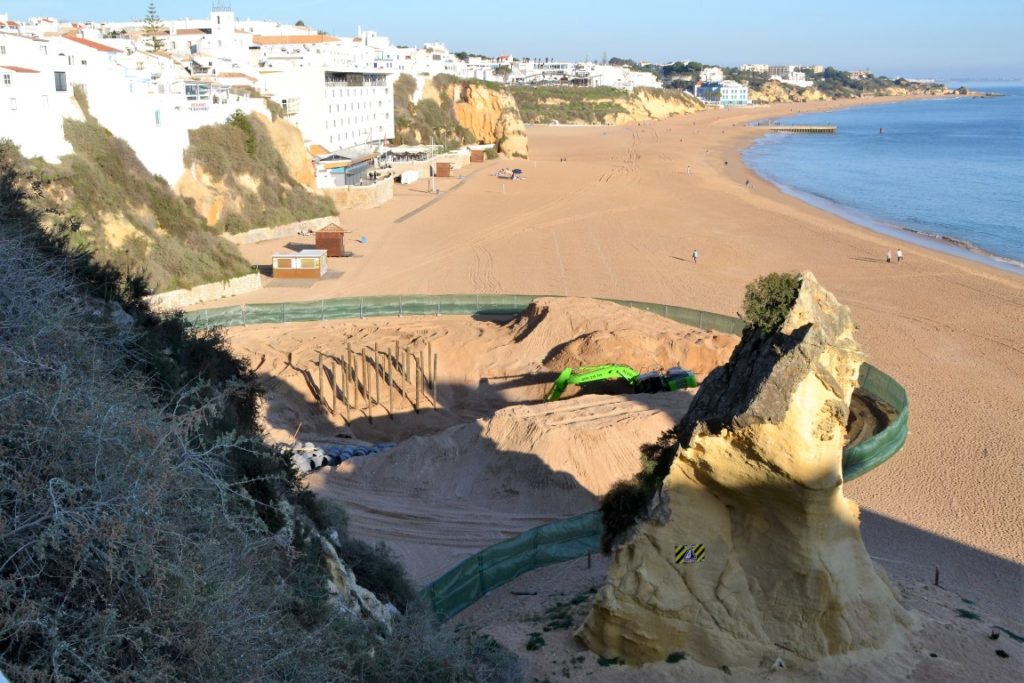

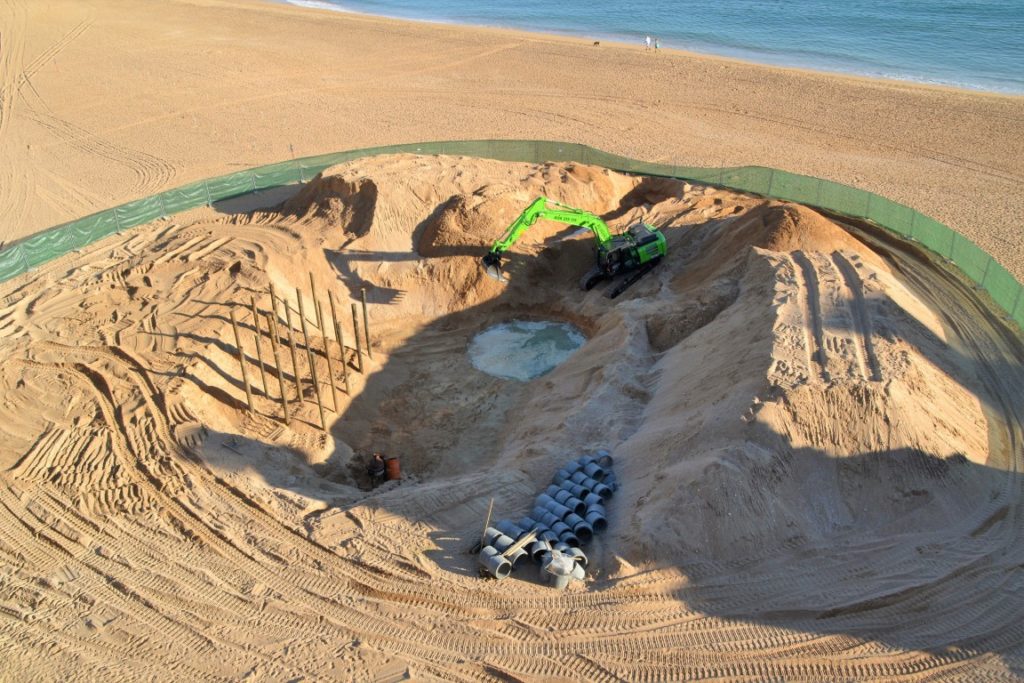
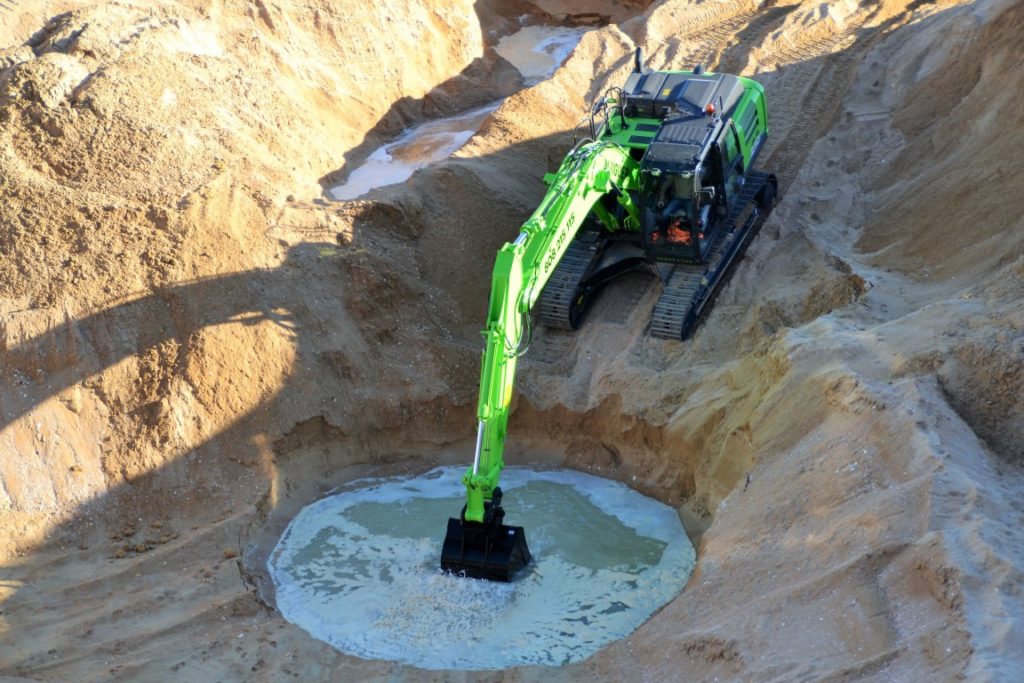
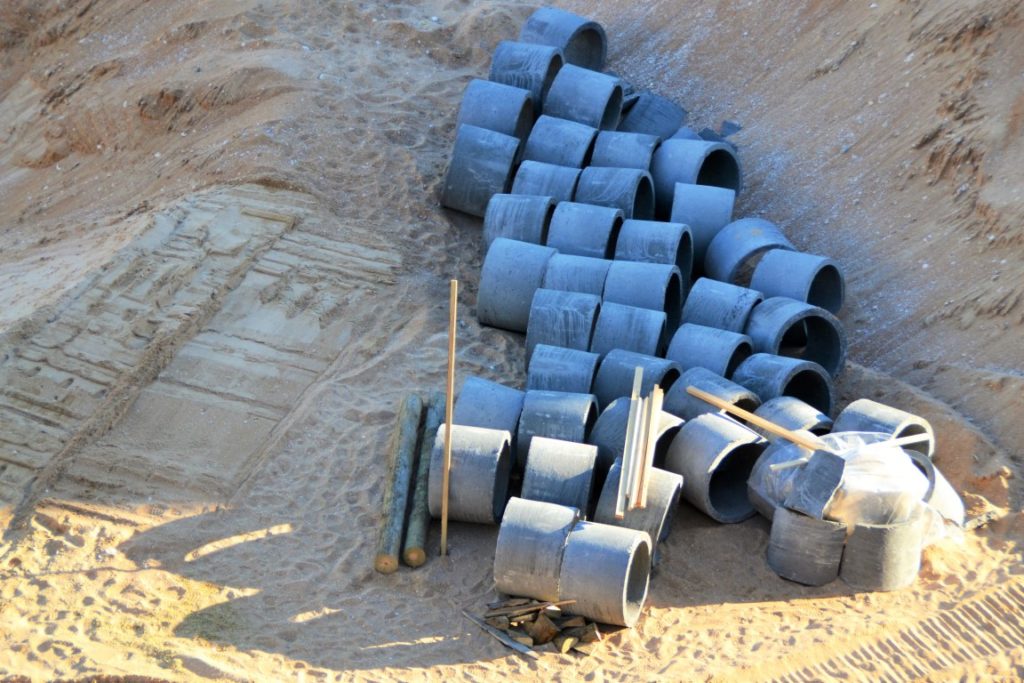
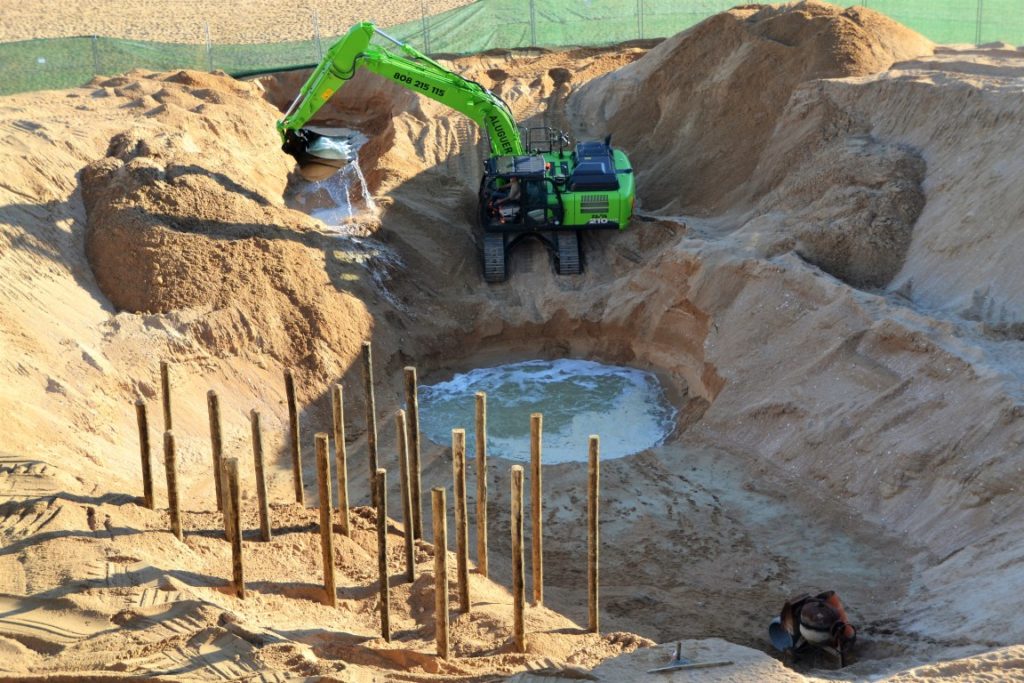
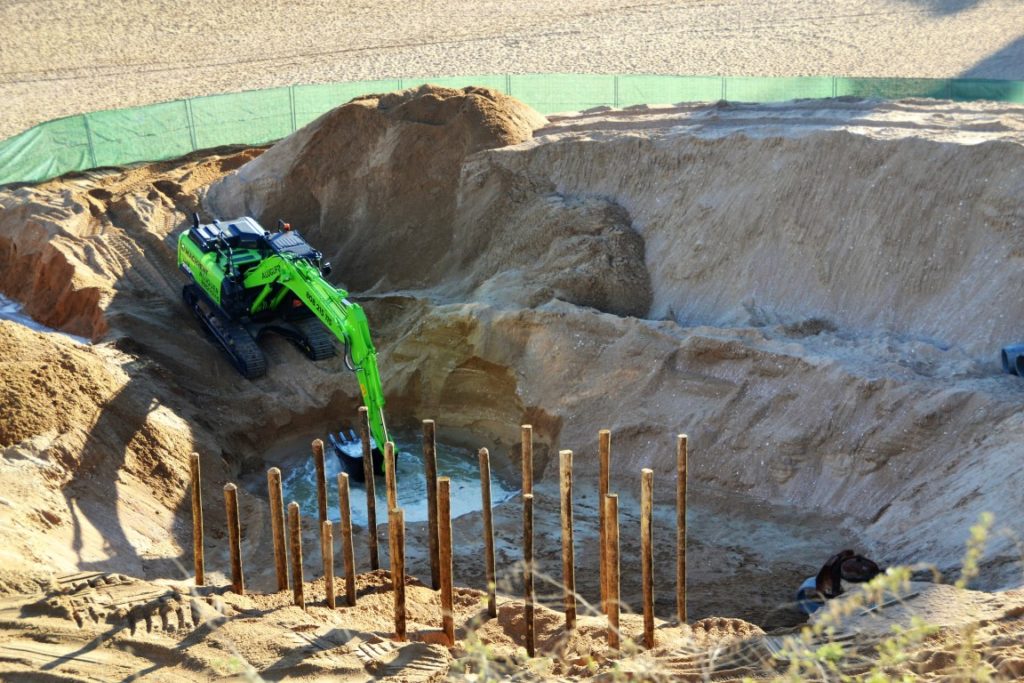
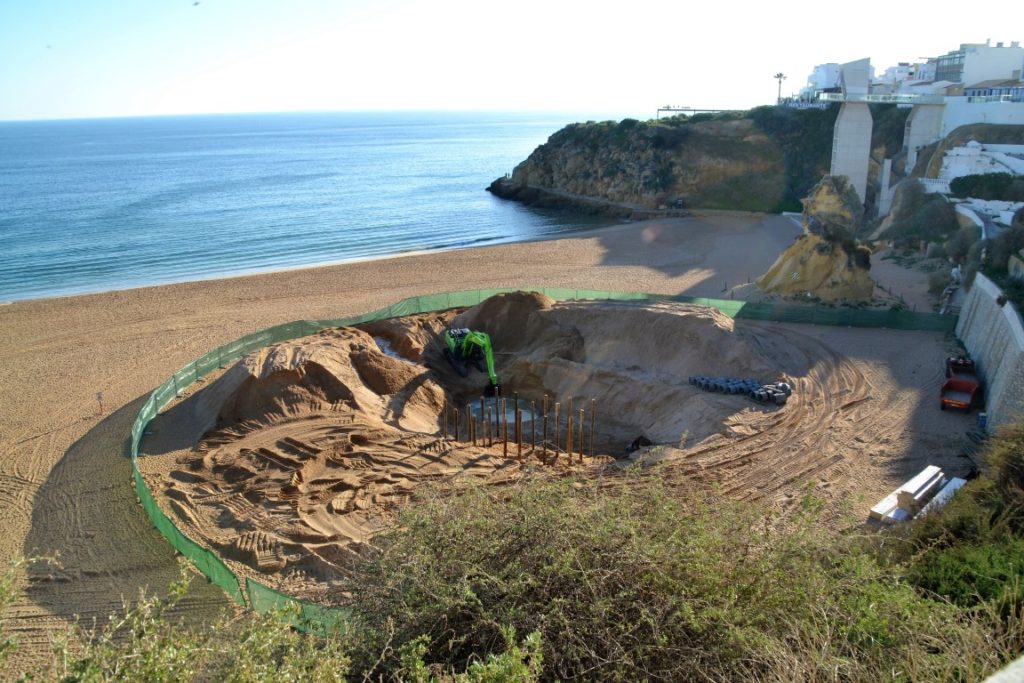


















Comments